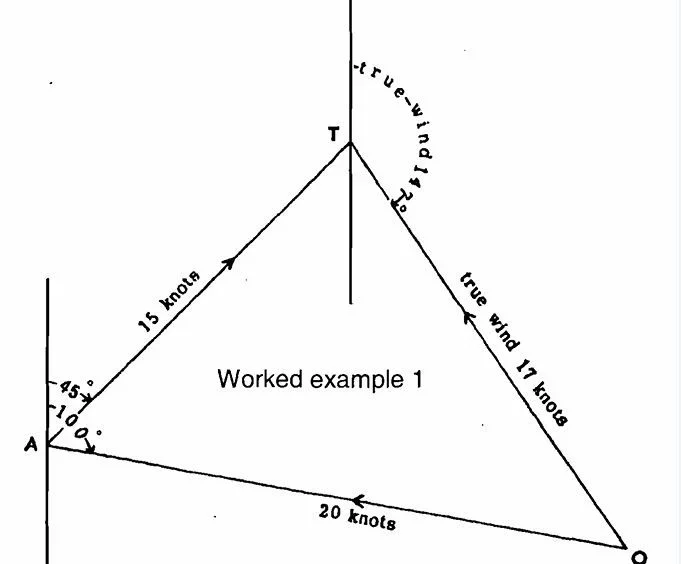Knowing how to calculate true wind and apparent wind is important on a ship, not only for navigability but also for operational planning and safety. Two of the most common terms that are used when working with wind on the sea are true wind and apparent wind. While they’re similar, they are not identical—and understanding how to accurately calculate both of them can make or break voyage planning or bridge watchkeeping.
This manual takes you through the definition of each and how to compute them through the classic Wind Triangle approach, which is still among the most trustworthy instruments at sea even now.
What Is Apparent Wind
Obvious wind is the felt wind on board an approaching ship. It’s a mixture of the true wind blowing across the ocean and the wind created as a result of the ship’s own motion through the water.
Imagine it this way: if you’re standing and there’s a wind blowing from the north, you feel that wind directly. But if you begin to run to the east, the wind will now seem to be from a more forward and sideways position—yet the actual wind hasn’t moved. That’s apparent wind.
On boats, apparent wind is what an anemometer measures—it’s a combination of the speed of the boat and the wind around it.
What Is True Wind?
True wind refers to the actual wind in the atmosphere. It exists regardless of the ship’s movement. It is the wind which would be experienced if the ship were perfectly stationary. It is the wind direction and speed plotted on weather charts, and it is vital in planning courses, maneuvering, and co-ordination with helicopters or other support systems.
As ships are not usually at rest, true wind is usually calculated by subtracting the effect of the ship’s movement from the apparent wind.
Step 1: Obtain the Necessary Data
Make sure you have these four data before you proceed:
Ship’s course (°True)
Ship’s speed (knots)
Apparent wind speed (knots)
Apparent wind direction (relative or true)
The direction of the apparent wind is usually taken in relation to the ship’s bow, so you might have to add it to the ship’s heading to get the true direction.
Step 2: Recognize the Wind Triangle
Seafarers usually employ what’s referred to as the Wind Triangle in order to compute the true wind. It represents the way the relation between:
Ship’s motion is the vector created by the vessel’s speed and course.
Apparent wind is the wind felt on board. It is influenced by the ship’s movement.
True wind (the real wind over the sea)
The three vectors make up a triangle. If you plot two of the vectors (ship’s motion and apparent wind), you can calculate the third one (true wind) using a chart or plotting sheet. This is especially handy when you don’t have automated systems on board or need to double-check your instruments manually.
Step 3: Apply the Wind Triangle (Graphical Method)
This is how to use the wind triangle in step-by-step procedure:
Select a scale on which to plot. For instance, 1 cm = 5 knots.
Plot the ship’s speed and course from a starting point based on the direction the ship is sailing. This illustrates how the vessel moves through the water.
Plot the apparent wind vector from the same point according to its direction and speed (transformed into true bearing if necessary).
Now, from the end of the heading line, draw a line equal to the wind vector but in the direction it’s actually coming from. You are essentially building a triangle where one side is the ship’s motion, the second is the apparent wind, and the third will be the true wind
You can measure:
The direction of the true wind by using a protractor aligned with true north.
The true wind speed by measuring the length of the side of the true wind and converting it back on your scale.
Why This Matters
Computing true and apparent wind is not just an academic exercise. It is applied on the bridge and deck in real terms as follows:
Route and weather optimization
Helicopter operations (calculations for wind on deck)
Sail handling on sail ships
Correct interpretation of weather forecasts
Although present-day ships are fitted with systems that automatically compute true wind, knowledge of doing so manually is an essential skill for any navigating officer.
Final Thoughts
Understanding how to calculate true wind from apparent wind using the Wind Triangle is a key part of seamanship. It enhances your situational awareness, allows you to cross-check on board instruments, and assures you in interpreting nature.
As an officer serving on a merchant vessel or a cadet-in-training, mastering this task will be only for your good and make you more competent and reliable on the bridge.


